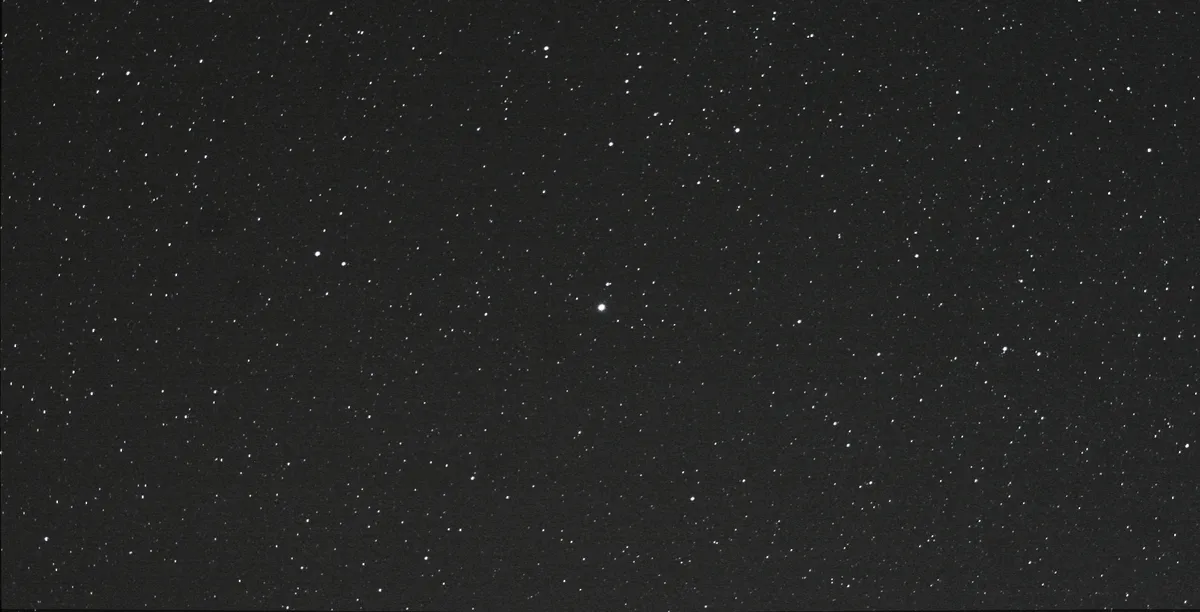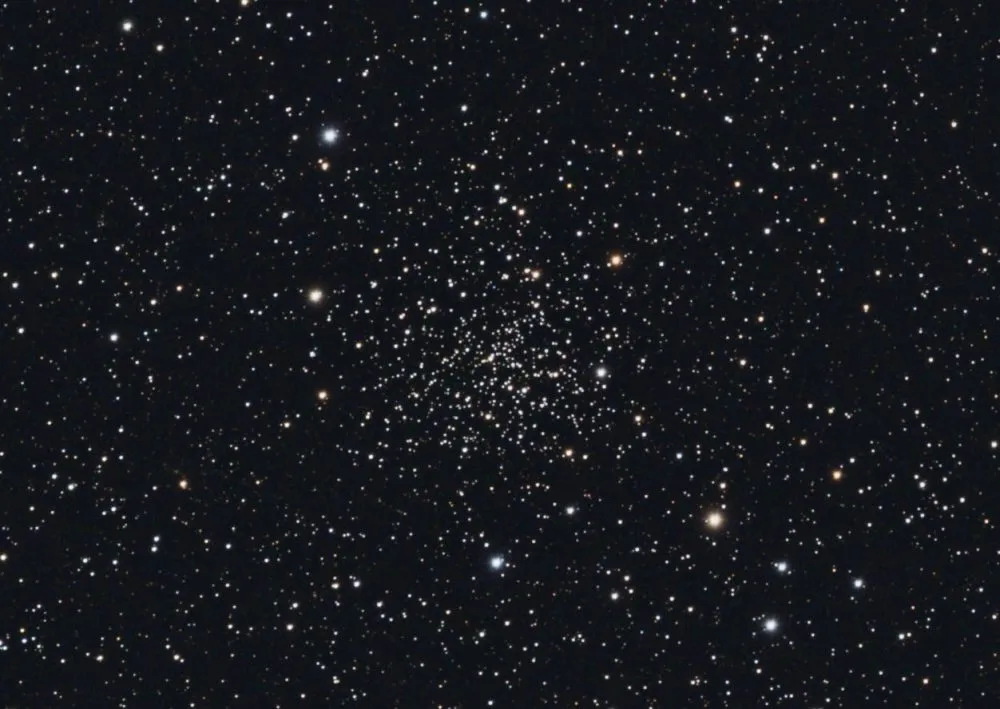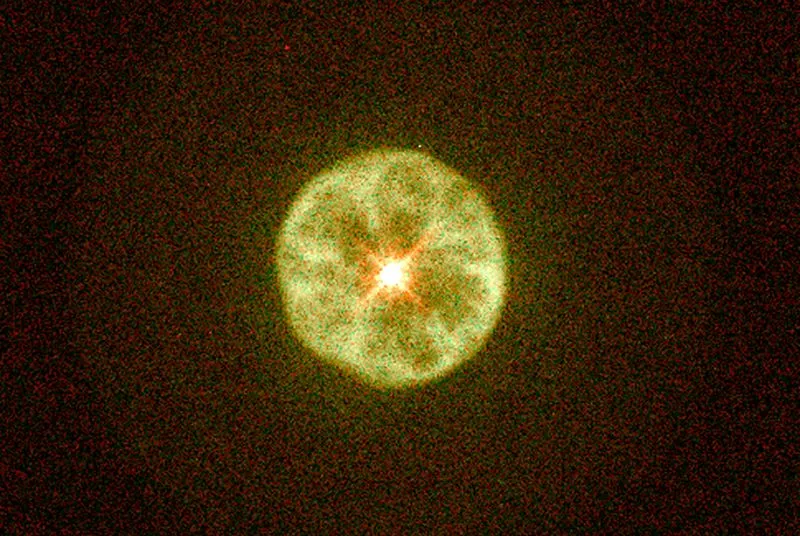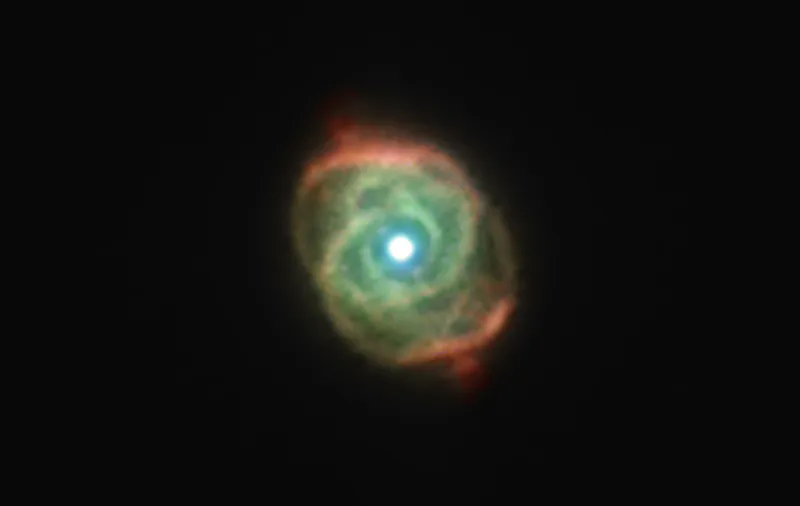For many astronomers, Polaris will have been the first star you learned to spot in the night sky. It may not be the brightest star like Sirius A or have the alluring science of Betelgeuse, but the fact that the northern sky appears to revolve around it makes it a loyal companion, and a fascinating object to observe.
Perhaps it's also to do with the fact that Polaris lies in Ursa Minor and can be found by star-hopping using the 'pointer' stars Merak and Dubhe in the Plough asterism: it makes for a great lesson in star-hopping and learning basic constellations.
For more on this, read our guide on how to find the North Star.

But for more experienced astronomers, there are a great many deep-sky objects waiting to be observed around Polaris.Here are 6 of the best, as selected by The Sky at Night's Pete Lawrence.
The targets here can be observed with small/medium telescopes like a reflector or SCT under 6 inches or a refractor under 4 inches, although larger aperture telescopes will give you an even better view.
For more deep-sky tours, try our Messier Object tour, our Caldwell Catalogue tour, or our pick of the best galaxies to observe in the night sky.
6 deep-sky objects around Polaris
1
NGC 188

Required equipment:
- Small/medium scope Reflector/SCT under 6 inches; refractor under 4 inches
- Large scope Reflector/SCT over 6 inches; refractor over 4 inches
NGC 188 is an open cluster near the North Celestial Pole (NCP). Its declination is 85.3˚ and it sits 4˚ south of Polaris. In Patrick Moore’s Caldwell Catalogue – a list of bright deep-sky objects organised by declination – it’s listed as Caldwell 1.
The best way to visualise NGC 188’s location is to imagine it in a squat isosceles triangle, Polaris at the top, mag. 4.3 Delta (δ) Ursae Minoris at one base vertex and NGC 188 at the other in the direction of Cassiopeia. It has an apparent diameter of 0.25˚ and shines at eighth magnitude. It suits a low power eyepiece.
2
NGC 2276

Required equipment:
- Small/medium scope Reflector/SCT under 6 inches; refractor under 4 inches
- Large scope Reflector/SCT over 6 inches; refractor over 4 inches
If your telescope is on an equatorial mount, our first two targets may be tricky; the irony of near-NCP viewing is that although movement due to Earth’s rotation is minimised, many equatorial mounts have difficulty pointing so close to the pole. If you're on the lookout for a new mount, read our guide to the best telescope mounts available.
Interestingly, Delta (δ) Ursae Minoris, NGC 188 and NGC 2276 all sit 4˚ from Polaris. Rotate anti-clockwise around Polaris for 111˚ from Delta to get to NGC 188, and a similar rotation to get to NGC 2276.
This galaxy has a visual magnitude of 10.6 but low surface brightness. It’s just about visible with a 250mm scope, sitting close to a mag. 8.5 star, 2 arcminutes to the west-southwest.
The mag. 12.1 lenticular galaxy NGC 2300 sits 5 arcminutes to the east of NGC 2275 and although it has a lower listed magnitude, is easier to spot due to higher surface brightness.
3
IC 3568

Required equipment:
- Large scope Reflector/SCT over 6 inches; refractor over 4 inches
Extend the line from NGC 188 through Polaris for twice the distance again to arrive at the planetary nebula IC 3568 in Camelopardalis. This has a visual magnitude of 10.6. It best suits larger apertures over 300mm in diameter.
IC 3568 appears nicely concentrated through the eyepiece; there’s a bright inner core approximately 12 arcseconds across with a an outer halo extending to 20 arcseconds.
4
NGC 6217

Required equipment:
- Small/medium scope Reflector/SCT under 6 inches; refractor under 4 inches
- Large scope Reflector/SCT over 6 inches; refractor over 4 inches
The mag. 11.2 barred spiral galaxy NGC 6217 lies in Ursa Major near the ‘box’ defining the Little Bear’s rump. Locate the two northern stars in the box, Eta (η) Ursae Minoris and Zeta (ζ) Ursae Minoris. Imagine these as the base of an equatorial triangle pointing towards the northeast, the northeast vertex marking the position of NGC 6217.
A small scope will show this object as a faint patch with a stellar centre. Increasing the aperture to 250mm shows a more elongated, brighter patch about 1.5 arcminutes across. A 300mm instrument increases the apparent size, almost doubling what you can see of the galactic target and revealing a granular texture in the core.
5
NGC 6340

Required equipment:
- Small/medium scope Reflector/SCT under 6 inches; refractor under 4 inches
- Large scope Reflector/SCT over 6 inches; refractor over 4 inches
We hop into Draco for our last two objects, the penultimate being NGC 6340, an 11th magnitude unbarred spiral galaxy. Apertures below 250mm show a small circular object, roughly 1 arcminute in diameter. The core is bright here, and definitely a disc rather than a point of light.
A mag. 11.2 red-coloured star sits 2 arcminutes northwest of the galaxy. Increasing aperture brings a larger apparent size to the object, increasing its size by about 70%. The core is well defined, around two-thirds of an arcminute across, and shows no real structure, appearing like an evenly illuminated disc of light. NGC 6340 is around 55 million lightyears away
6
NGC 6543

Required equipment:
- Small/medium scope Reflector/SCT under 6 inches; refractor under 4 inches
- Large scope Reflector/SCT over 6 inches; refractor over 4 inches
Our final object is a lovely planetary nebula known as NGC 6543, the Cat’s Eye Nebula. Shining at mag. +8.1, it has a good surface brightness and is a viable target for smaller apertures, although don’t expect too much detail below 250mm. At low powers it’s easy to mistake it for a star.
One way to reveal it is to flip an OIII filter across the view: this will cause the stars to blink out while the nebula remains visible. The colour is striking with a definite blue-green hue. Once you’ve identified the object, pile on the power.
A 150mm scope reveals an elongation to its shape, 250mm revealing a degree of asymmetry to the elongation. Powers over 350x may show bright spots around the periphery. The beautiful Cat’s Eye Nebula is located 3,600 lightyears from Earth.
Pete Lawrence is an experienced astronomer and co-host of The Sky at Night. This guide originally appeared in the December 2020 issue of BBC Sky at Night Magazine.

